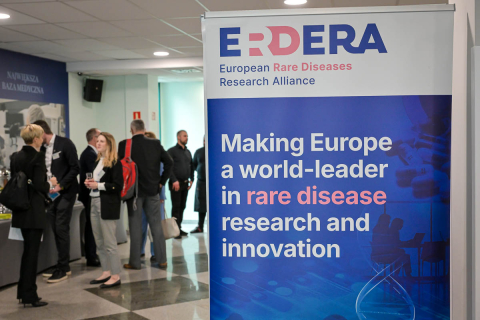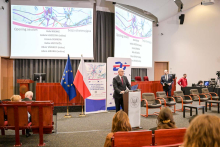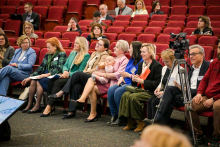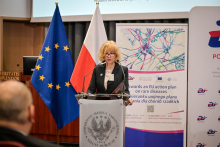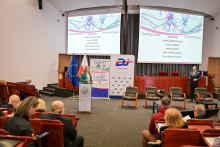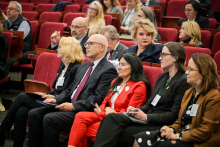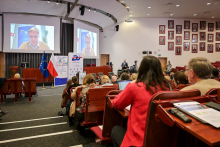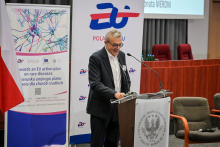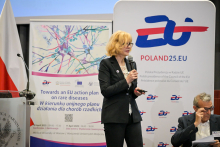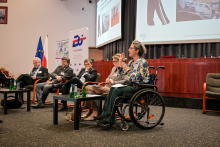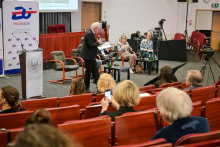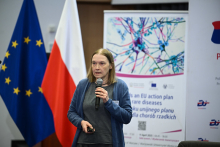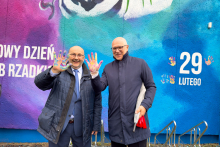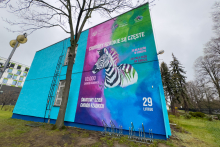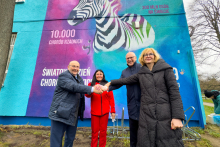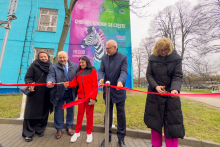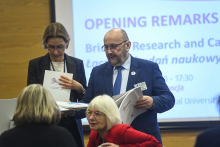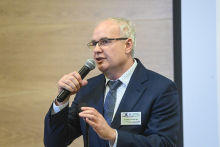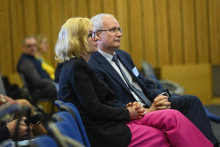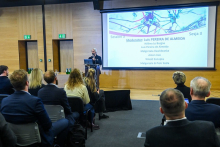The event was part of the Polish Presidency of the EU Council, and took place on April 10 and 11. The discussions highlighted the urgent need for creating an EU policy framework for improving the quality of life among patients with rare diseases. The speakers also emphasized the necessity to support the EU’s political involvement in this area and the need for a platform for stakeholders to cooperate and share knowledge.
Expert voices
Baiba Miltoviča, Head of the Transport, Energy, Infrastructure and the Information Society section at the EESC: In recent years, the EESC strongly supported a European action plan on rare diseases that would account for the diverse needs of patients and healthcare providers. We need to ensure equal opportunities to patients with rare diseases in all Member States, and establish additional measures to support healthcare authorities on the national, regional, and local level as well as civil society organizations in their efforts to ensure high-quality affordable care for patients with rare diseases.
Izabela Leszczyna, Minister of Health: Patients with rare diseases need quick diagnosis and effective treatment. The priority is to cut the time from symptom onset to diagnosis by improving access to genetic testing and supporting research into new treatment methods. Expanding cooperation in this area will allow for ensuring that patients with rare diseases receive effective help. A common strategy for all Member States will facilitate better access to diagnostics and treatment across Europe.
Urszula Demkow, Undersecretary of State at the Ministry of Health: An important element in an efficient patient care system involves designating and establishing centers with expert knowledge on rare diseases in order to ensure the best possible care for patients with those conditions, and close cooperation with European reference networks. In order to better monitor the processes, we have been working on IT tools such as the Polish register of rare diseases, and electronic health records for patients with rare diseases, as well as new information and data resources in order to improve care and enhance patient safety.
Adam Jarubas, Chair of the Committee on Public Health at the European Parliament: Rare diseases affect millions of people in the EU, and yet only 6% of them have access to treatment, and not in every EU country. We must put an end to this “geographical health lottery” of unequal access to experienced specialists. The pandemic created grassroots social support for greater involvement of Europe in health, and we must not overlook those expectations of the public. Maybe, in the case of rare diseases, Europe is the best answer.
A meeting between patients and clinicians
On April 11, a side event was held in connection with the “Towards an EU Action Plan on Rare Diseases” conference, i.e. a meeting between clinicians, researchers, and patients, titled “Bringing research and patient care together”.
The attendees were welcomed by Krzysztof Szczałuba, MD, PhD, Director of the MUW Center of Excellence for Rare and Undiagnosed Diseases. He presented several clinical and academic projects currently underway at the MUW in the area of rare diseases. He emphasized that two of our clinics belong to elite European Reference Networks (ERN) that specialize in treating rare diseases, i.e. the Department of Neurology, and the Department of Hepatology, Transplantology and Internal Medicine.
The official opening was followed by discussions of topics such as progress in the diagnostics of rare diseases, innovative therapies, and clinical trials, as well as enhancing national and European cooperation in translational research. Speakers included Professor Anna Kostera-Pruszczyk, Chairperson of the Rare Diseases Council and Head of the MUW Department of Neurology, who delivered a presentation on “Newborn screening initiatives & future directions – the Polish example of diagnosis and treatment of Spinal Muscular Atrophy (SMA)”.
“I believe that screening is here to stay, as there are situations where there is no time to lose for our young patients, and SMA is an excellent example,” she said. “Motor neurons begin to degenerate very early in this condition. Many motor neurons are already dead even before any symptoms occur. So we don’t want to wait for the symptoms. We want to offer treatment as early as possible. We have modern therapies that are highly effective, especially if the patient receives them already before the symptoms occur”, she emphasized.
Her presentation ended with the following message:
“Let’s fight for early diagnosis, and do all it takes for our pre-symptomatic patients, while not disregarding those who were not lucky enough to get a diagnosis before their symptoms started. All our patients, not only the pediatric ones, but adults as well, deserve good access to care.”
A mural unveiled
The “Towards an EU Action Plan on Rare Diseases” conference was accompanied by one more unique event: the unveiling of a mural. It was painted on the ZIAM building on the Banacha Campus. The mural features a zebra, which symbolizes patients with rare diseases. Why the zebra? Each of those animals has a unique pattern of stripes – just as every patient with a rare disease is unique. In diagnostics, the rule is to first consider the conditions with greater prevalence in the population. This matches the saying: “When you can hear hoofbeat, think about the horse, not the zebra.” However, in order to diagnose a rare disease, you also need to consider the zebra. And this is precisely why the mural pictures a huge zebra. The art was unveiled by Professor Urszula Demkow, Undersecretary of State at the Ministry of Health, Professor Rafał Krenke, MUW Rector, Professor Alicja Chybicka, pediatric oncologist and hematologist, Member of Parliament, and Mr. Stanisław Maćkowiak, a representative of the National Forum ORPHAN.
